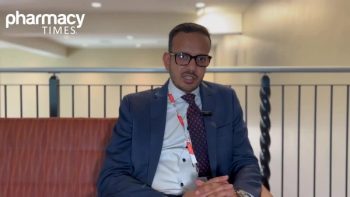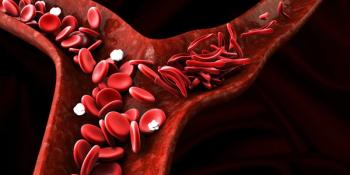
Hepatitis C Drug Adherence Not Found to Impact Liver Transplant Risk
Patients treated with HCV drugs prior to transplant found to have higher overall post-transplant care costs.
A recent study found that adherence to hepatitis C virus (HCV) regimens does not affect the risk of liver transplant.
The study, published in the Journal of Managed Care & Specialty Pharmacy, also found that treated HCV patients who required liver transplants had significantly higher health care costs compared with untreated patients prior to transplant.
For the observational, historical cohort study, researchers used enrollment data and pharmacy and medical claims data from the Humana Research Database. Patients eligible for the study were required to have a documented diagnosis or treatment of HCV between January 1, 2008, and June 30, 2013.
Patients were excluded from the study if they had hepatitis B, were not fully insured by a commercial or Medicare Advantage Prescription Drug (MAPD) plan, or were not between the ages of 19- and 89-years-old.
The study index date for untreated patients who received a liver transplant was defined as the date of the transplant. For all other patients, the index was defined as either the date of first observed HCV treatment or the diagnosis date if they had not been treated.
In order to maximize the sample size, there was no minimum pre- or post-index enrollment period required, and patients were followed for their entire post-index enrollment through December 31, 2013. The sample population was divided into treated and untreated groups, and then subdivided by the presence or absence of a liver transplant.
There were 2 main objectives in the study: patients treated for HCV who received a liver transplant were evaluated to assess the potential impact of treatment adherence on future risk of liver transplant; and treated and untreated patients who received a liver transplant were assessed for differences in transplant costs between the 2 groups.
To assess the cohorts for baseline demographic and clinical characteristics, researchers used Student’s t-tests for continuous variables and chi square tests for categorical variables. For the first objective, researchers used Cox proportional hazards models to estimate the relative risk (RR) of liver transplant by level of treatment adherence (> 80%, 50%-79%, and < 50%) based on proportion of days covered (PDC).
In the second objective, general linearized models with log link gamma distribution were used to compare median total medical costs from index date until the end of the study period (or death/disenrollment) of a liver transplant between treated and untreated patients. All of the costs were converted to 2013 US dollars, and were reported as total costs per patient and per patient per month (PPPM) to account for the varying follow-up periods.
After excluding 10,377 patients who met the exclusion criteria, there were 43,046 patients remaining in the cohort. Participants were primarily Caucasian (65-78%) and male (58-73%), with a mean age of 58-years-old.
The results of the study showed that only 6.29% (n=2708) of the total cohort received HCV treatment, and less than 1% (n=366) received a liver transplant. Overall, there was a higher percentage of HCV-treated patients who received a liver transplant than untreated patients (1.8% and 0.8%, respectively).
There was an upwards trend in the rate of liver transplant as adherence worsens (1.25%, 1.30%, and 1.99% for high, low, and very low adherence levels, respectively); however, this did not meet statistical significance.
The average time to liver transplant was found to be longer with higher adherence (683 days, 623 days, and 454 days for high, low, and very low adherence levels, respectively). The RR of liver transplants for low (PDC 50-79%, RR = 0.9) and very low (PDC < 50%, RR = 1.7) adherence levels was not significantly different from patients with high adherence (PDC > 80%, RR = 1.0, reference group) for each course of treatment.
Of the 366 patients who received a liver transplant during the study, only 48 (13.11%) were treated for HCV. Through adjusted and unadjusted analyses, researchers found that the total median health care costs were significantly higher for patients who received HCV treatment compared with those who did not ($231,139 versus $86,167, respectively).
In adjusted median PPPM costs, there were significant differences found ($20,583 treated versus $5778 untreated, P = 0.0076, adjusted P = 0.008), which accounted for the varying patient follow-up times. This was driven by total pharmacy costs and HCV-related medical costs.
Limitations to the study included: several variables that were unavailable in the claims source, including treatment response, transplant eligibility requirements, reasons for nonadherence, and actual medication consumption; the effects of education, employment levels, and access to health care and housing typically absent from claims data that could not be assessed; no statistical adjustments made for the large difference in sample size between the groups; the study population was from a single health plan; and the exclusion of newer DAA agents that have been approved since June 2013 because of insufficient longitudinal data available to analyze these newer agents.
The findings revealed that higher HCV treatment adherence with boceprevir, telaprevir, ribavirin, and pegylated interferon-α — used alone or in combination – did not result in a decreased risk of liver transplant, indicating that further evidence needs to be done to link treatment adherence to future liver transplant risk.
As for costs, findings show that patients treated for HCV who ended up receiving a liver transplant had significantly higher total and PPPM health care costs compared with patients who did not receive HCV treatment before transplant. The authors noted that more research needs to be done for newer all-oral DAA regimens that have higher acquisition costs to more accurately assess medication adherence and the relationship with transplantation, as well as total health care costs.
Newsletter
Stay informed on drug updates, treatment guidelines, and pharmacy practice trends—subscribe to Pharmacy Times for weekly clinical insights.






















































































































































































































